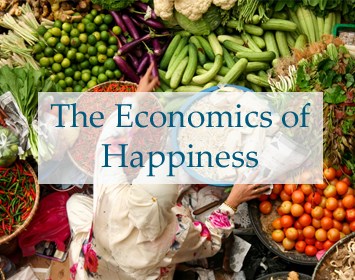Inauguration 2017 Special Coverage w/ Angela Davis, Naomi Klein, Ralph Nader & More
Menu

Special coverage in the Trump Era
From Public Citizen's Corporate Presidency site: "44 Trump administration officials have close ties to the Koch brothers and their network of political groups, particularly Vice President Mike Pence, White House Legislative Affairs Director Marc Short, EPA Administrator Scott Pruitt and White House budget director Mick Mulvaney."
Dark Money author Jane Mayer on The Dangers of President Pence, New Yorker, Oct. 23 issue on-line
Can Time Inc. Survive the Kochs? November 28, 2017 By Jane Mayer
..."This year, among the Kochs’ aims is to spend a projected four hundred million dollars in contributions from themselves and a small group of allied conservative donors they have assembled, to insure Republican victories in the 2018 midterm elections. Ordinarily, political reporters for Time magazine would chronicle this blatant attempt by the Kochs and their allies to buy political influence in the coming election cycle. Will they feel as free to do so now?"...
"Democracy in Chains: The Deep History of the Radical Right’s Stealth Plan for America" see: our site, and George Monbiot's essay on this key book by historian Nancy MacLean.
Full interview with The New Yorker’s Jane Mayer March 29, 2017, Democracy Now! about her article, "The Reclusive Hedge-Fund Tycoon Behind the Trump Presidency: How Robert Mercer Exploited America’s Populist Insurgency."
Democracy Now! Special Broadcast from the Women's March on Washington
The Economics of Happiness -- shorter version
Local Futures offers a free 19-minute abridged version of its award-winning documentary film The Economics of Happiness. It "brings us voices of hope of in a time of crisis." www.localfutures.org.
What's New?
March 22, 2011
Climate Crises and Land
"When we talk about the climate change crisis, we generally refer to recent and future alterations to the Earth’s climate systems that can be attributed to human activities (1). Foremost among these activities are the burning of fossil fuels, exploitation of natural resources and production-consumption of energy and industrial goods, all of which are high emitters of greenhouse gases (GHGs). The relentless warming of the global climate as a result of increased GHGs in the atmosphere has already led to disruptions in seasonal weather and precipitation patterns, melting glaciers, changes in hydrological cycles and an increase in extreme weather events, with serious consequences for eco-systems, agricultural production, food and water security, and the livelihoods of rural and urban poor communities throughout the world.
Land and water are central elements in the climate crisis. Industrialization and economic growth depend greatly on the exploitation of land and water, and their capture to serve energy production, mining, industry, agriculture, technology parks, tourism, recreation and urban expansion, continues unabated in every region of the world. Land cover and land use changes are the oldest global impacts of humankind and result in significant changes to the amount of carbon that is stored and released into the atmosphere. Forests and wetlands store more carbon than grasslands, which in turn store more carbon than croplands. The world’s natural forests, savannahs and wetlands have long helped maintain the global carbon cycle in balance, but their conversion to other uses has greatly diminished this crucial ecosystem service. Studies, including by the Intergovernmental Panel on Climate Change (IPCC), show that land use and land use changes are responsible for over 30 percent of GHG emissions that trap heat in the earth's atmosphere and cause global warming.
Plants, animal species and marine life are threatened or disappearing at an unprecedented pace due to the combined effects of global warming and industrial exploitation. Life at large is endangered by the decreasing availability of fresh water resources. Already, over 1 billion people live without access to safe drinking water and over a million people--mostly children--die every year from diseases such as diarrhea, dysentery and cholera related to lack of proper hygiene and safe drinking water.
IPCC assessments indicate that, globally, the negative impacts of climate change on freshwater systems are expected to be immense. From 2050 onwards, the area of land subject to increasing water stress is projected to more than double. Increased precipitation intensity and variability are projected to increase the risks of flooding and drought in many areas and negatively affect groundwater recharge, thus reducing underground water stocks. Due to changes in temperature and rain patterns, droughts have occurred more often since 1970. Changes in water quantity and quality due to climate change are expected to result in decreased food availability and increased vulnerability of poor rural communities, especially in the arid and semi-arid tropics, and Asian and African mega-deltas. Sea levels are expected to rise, changing the lives of coastal communities, triggering an increase in internal and regional displacement--particularly in Asia and Africa--and leading to more conflicts over land and water."...
Read complete report on-line here.
Date: March 23, 2011

